Blythe & Bourne Fish Passage (2019)
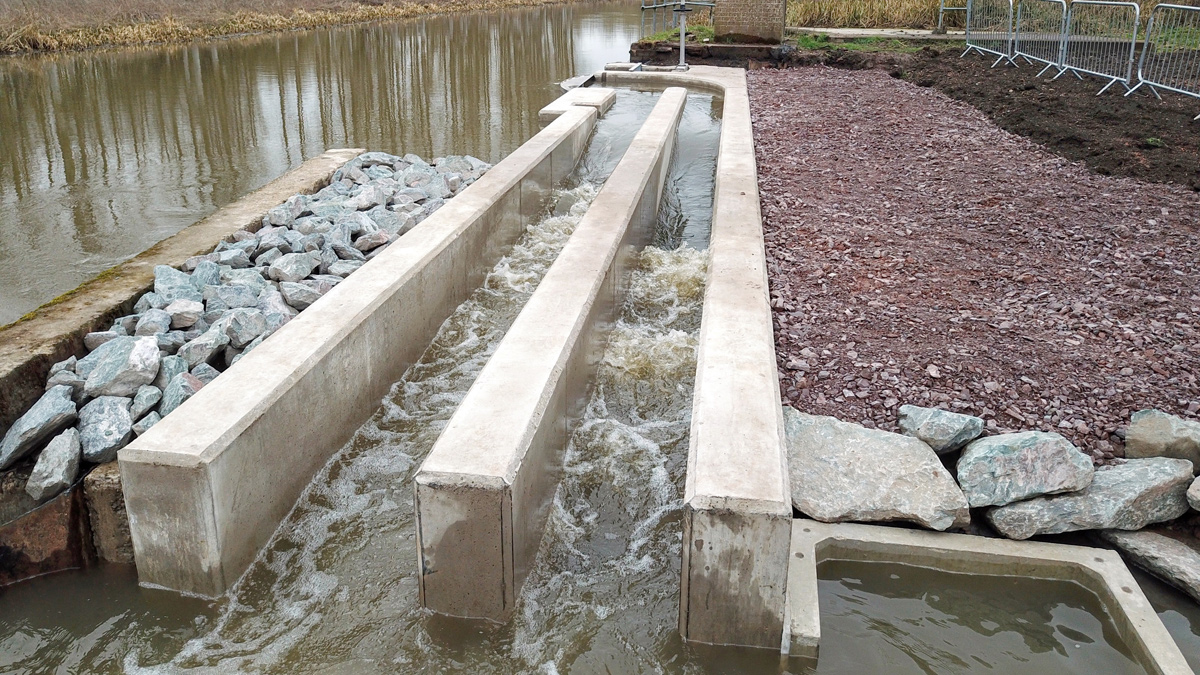
Fish pass at high flow - Courtesy of Galliford Try
The River Blythe is a tributary of the River Tame east of Birmingham – neither of the rivers are at good ecological status. Although reasons for failure under the Water Framework Directive (WFD) are complex, the Environment Agency (EA) identifies barriers to fish and eel passage as part of the problem. Severn Trent has gravity intakes on the lower reaches of the River Blythe which are barriers to fish and eel. As part of the National Environment Programme (NEP), Severn Trent has agreed to contribute their agreed fair share towards ensuring fish passage along the Blythe in supporting the achievement of good ecological status under the WFD.
Feasibility brief: options assessed & recommended solution
The brief for the feasibility phase was set out in the stage plan follows:
- Implement a means of fish passage at the Blythe gravity intake, as agreed with the Environment Agency.
- Baseline and post scheme monitoring to assess the ecological benefits.
Options for fish passage were developed through a series of papers and meetings, culminating in a successful key meeting with stakeholders at which the options presented as selected in this paper were agreed with the Environment Agency’s area RSA lead and regional fish pass specialist. The following options were considered for the River Blythe.
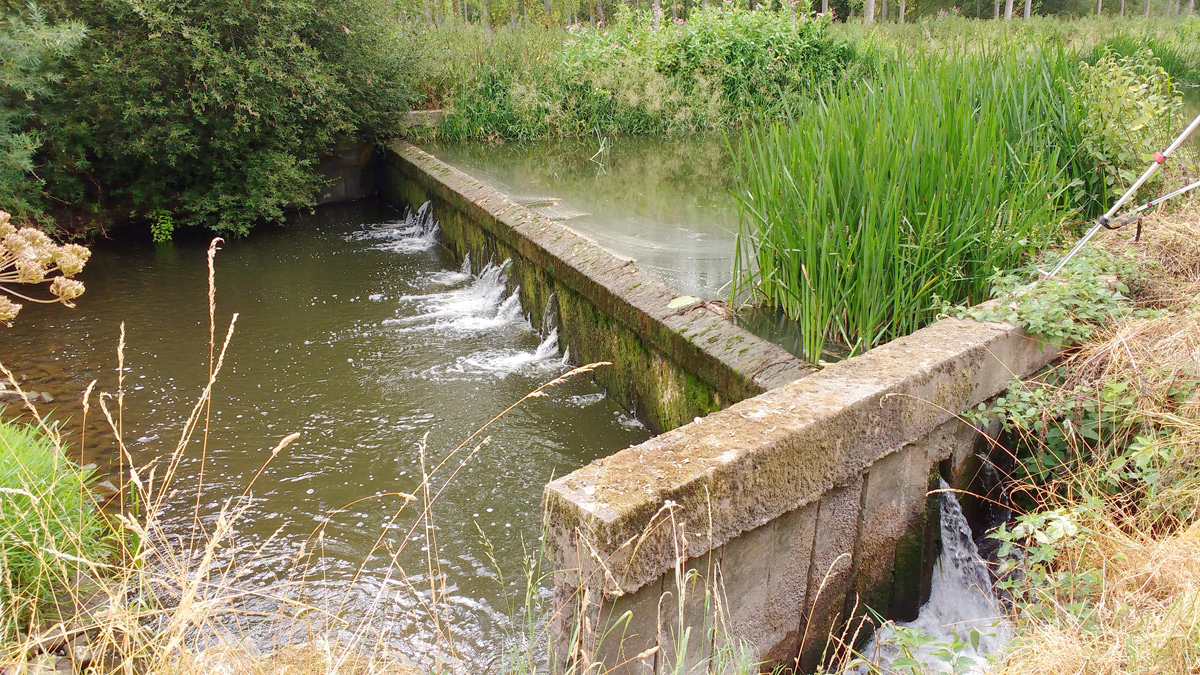
The original weir was a barrier to fish passage – Courtesy of Galliford Try
Removal of the weir that currently controls water level immediately downstream of Blythe gravity intake: This was rejected on grounds of cost and loss of resilience/operational flexibility of abstraction from the river Blythe. The gravity intake would not function reliably if the weir were demolished, the intake would close and abstraction would switch to the pumped intake downstream. Restricting all abstraction from the Blythe to a single pumped source would substantially increase operational costs whilst reducing both resilience and operational flexibility of abstraction from the Blythe. Removal of the weir was likely to induce geomorphological insatiability in the river and mobilise potentially polluted sediments stored behind the weir. Higher sediment loads in the river could be detrimental to the SSSI and quality of water available for abstraction at the pumped intake.
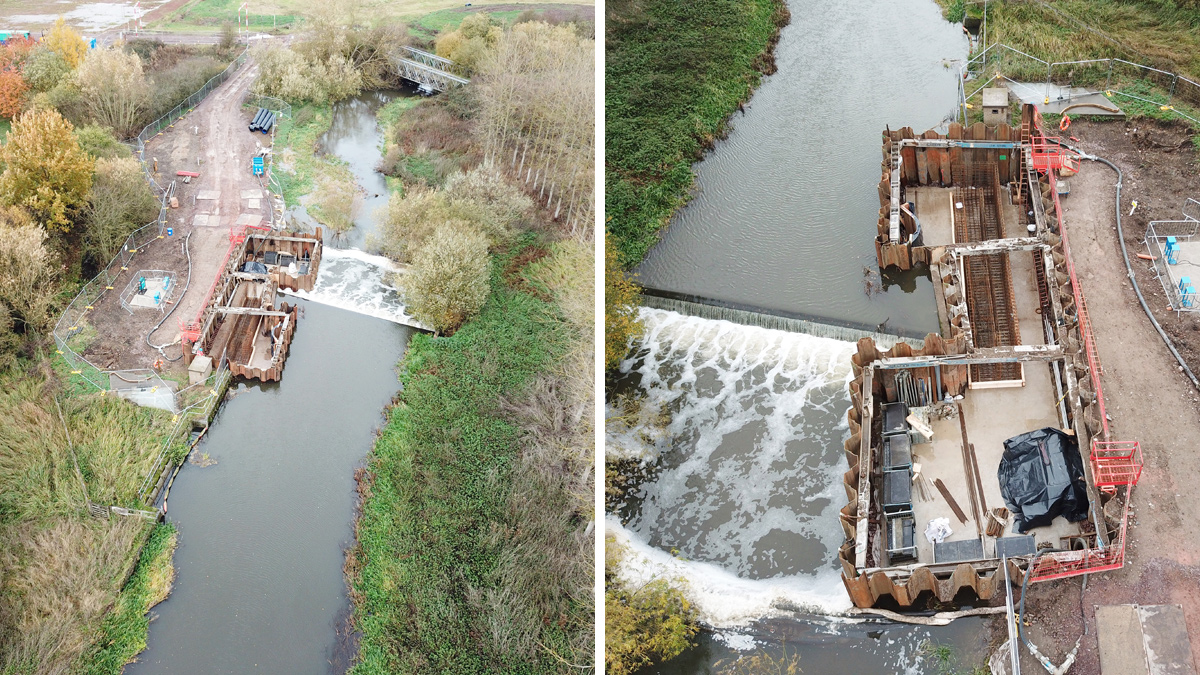
Blythe & Bourne Fish Passage – Courtesy of Galliford Try
Construction of a natural bypass channel: This would impose risks and complexities including the loss of precision in water level control, access across and purchase of third-party land, poor ground conditions and disposal of spoil off the floodplain. This option was rejected because the additional construction costs and associated risks over a technical fish pass, were considered not to outweigh its environmental benefits.
A technical ‘Larinier’ fish pass: This option would provide effective passage for fish and eel whilst also allowing water levels to be managed precisely. This was selected as the preferred option and agreed with the Environment Agency.
The Larinier fish pass between the Blythe Weir and the Blythe Weir intake weir will not compromise the ability of Severn Trent to abstract water, nor would it give rise to an unacceptable increase in flood risk.
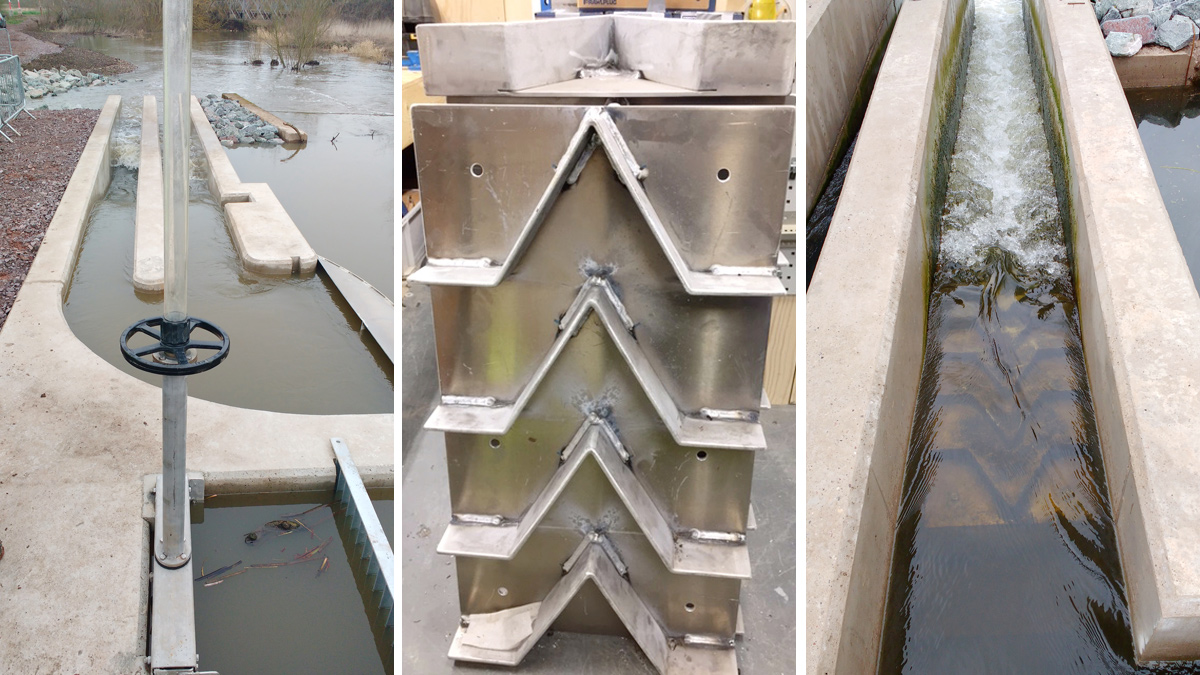
(left) fish pass at high flow (middle) stainless steel Larinier fish pass section and (right) Larinier fish pass at low flow
Topographical investigation and surveys
Ground investigation boreholes and trial holes were undertaken under permit from the Environment Agency and a topographical and underground services survey was commissioned by Galliford Try. A search of the Severn Trent drawing archives identified that the proposed location of the fish pass conflicted with a weir bypass pipe considered to be redundant.
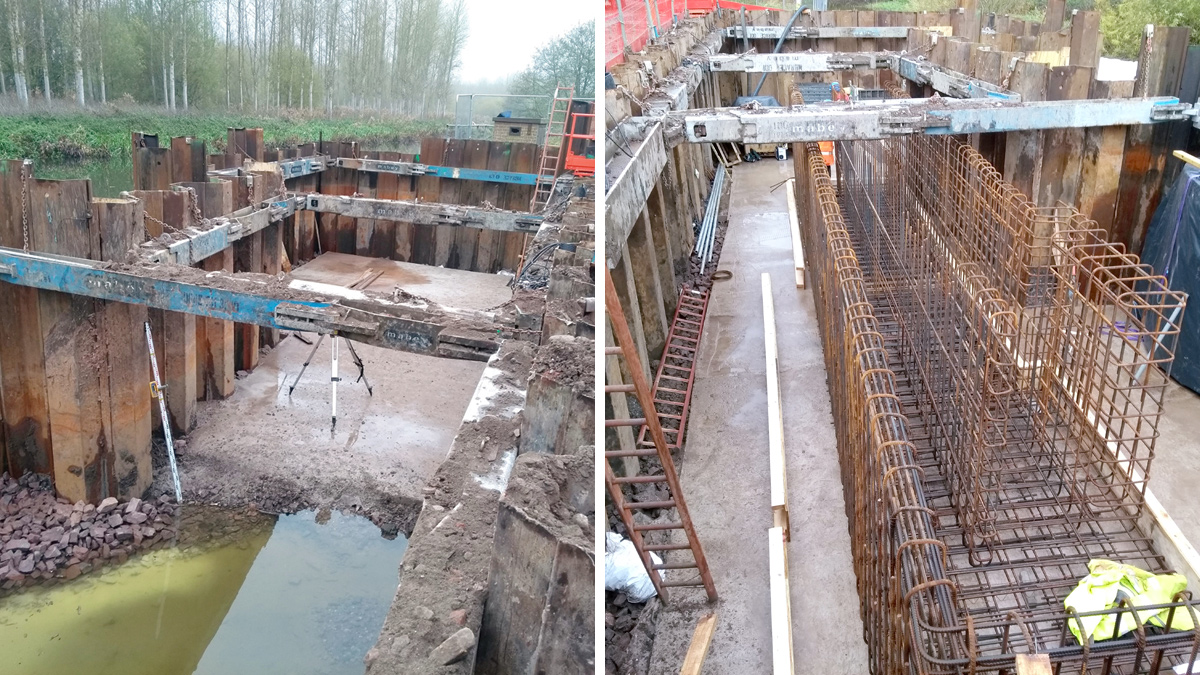
(left) Blinding base and (right) reinforcement cage – Courtesy of Galliford Try
Structural and asset condition survey
Several site walkovers were completed between November 2015 and 2018. These walkovers revealed that the weir at the Blythe Gravity Intake was being outflanked (short circuited) on both banks around the buttresses. Flow was also leaking through the main structure. This was identified as a significant financial risk and also a risks to the abstraction should any significant modification to this structure.
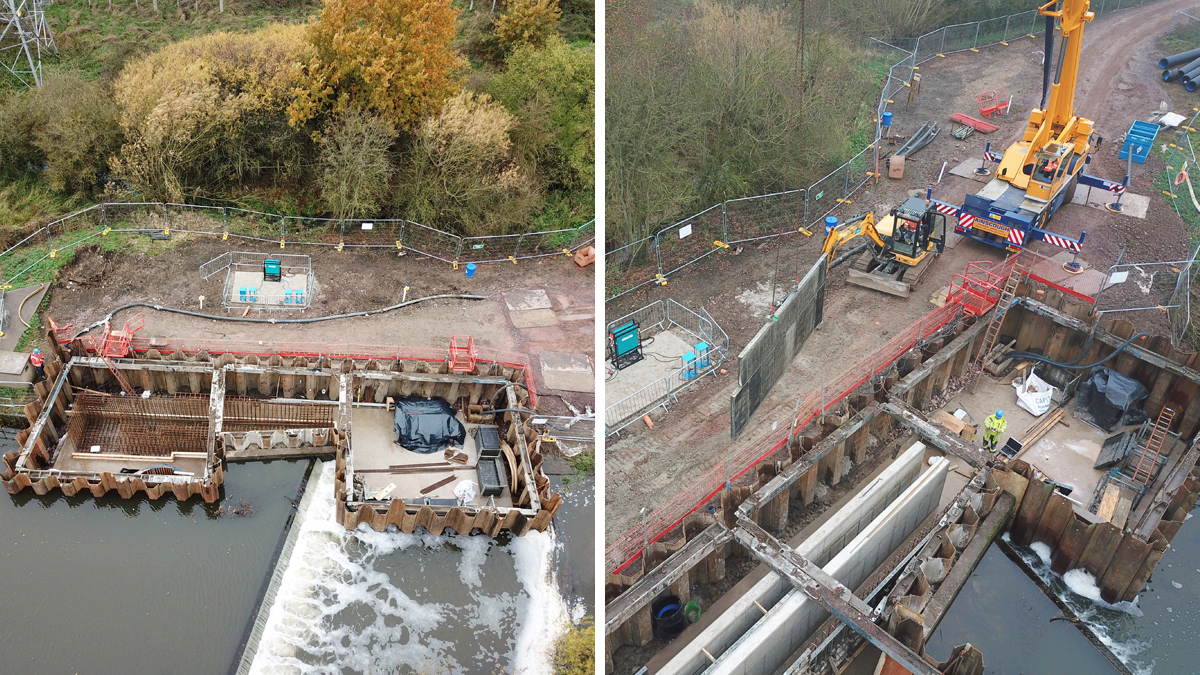
(left) Aerial photo showing construction within the cofferdam and (right) the long reach concrete pump – Courtesy of Galliford Try
Project constraints and risks
Flood risk and consultation formed and integral part of the Environment Agency permit application.
The difficulty in predicting a long-term trend in water levels at abstraction sites is the controlling factor. Adjustments to the weir crest will change the stage discharge relationship of the weir. Whilst the design seeks to minimise this, there remains the risk of discrepancy between design coefficients and ‘real world’ installations.
The river Blythe is a salmonid spawning river. No work could be undertaken ‘in river’ between the end of June and the end of September. To mitigate this constraint and risk to programme, an agreement was reached with the Environment Agency to undertake construction of the fish pass within a temporary cofferdam was agreed (works within cofferdam considered not to be ‘in river’).
Potential repairs to the existing weir and the extent of any necessary repairs were undefined at the time of contract, however building the fish pass off line, within a cofferdam mitigated those risks and simplified access to enable the repair work to the abutments.
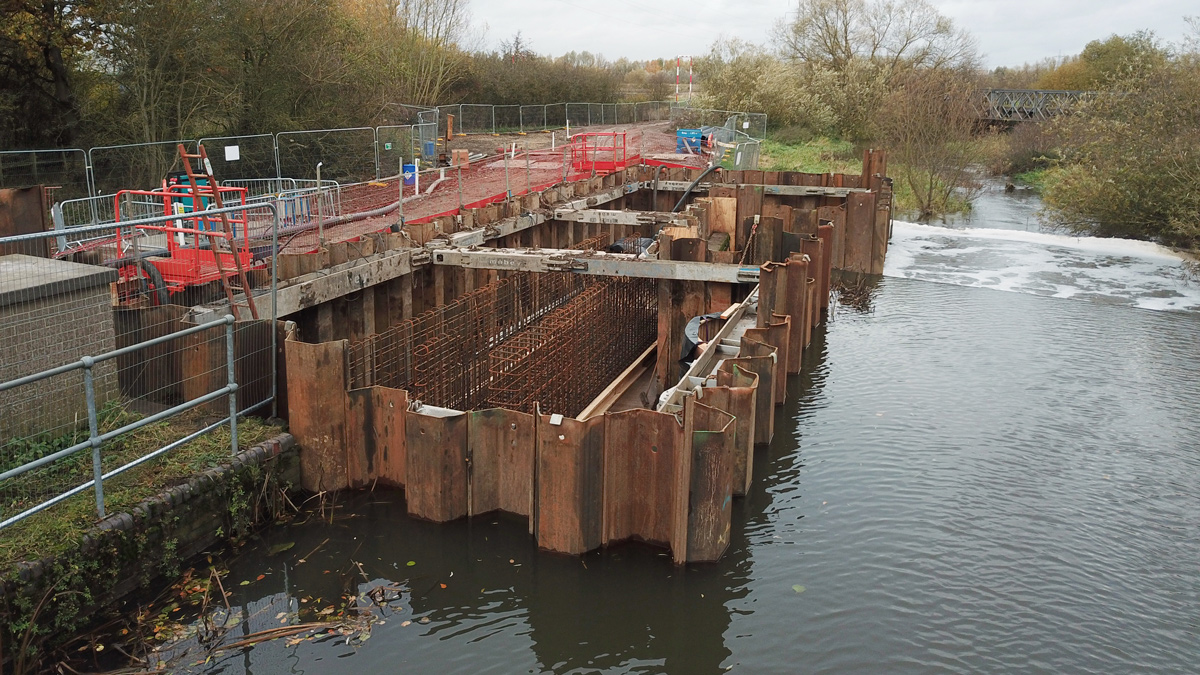
Extensive cofferdam – Courtesy of Galliford Try
Construction sequence
The construction sequence comprised the following:
- Construction of a piling matt to enable the cofferdam sheet pile installation. Once this was complete there were minor modifications to the weir buttresses.
- Cofferdam sheet pile installation and excavation to depth, as well as a well-point dewatering system installed with a sediment settlement system to allow discharge to the river.
- Construction of the concrete base with steel fixing for the Larinier fish pass prior to pouring the base.
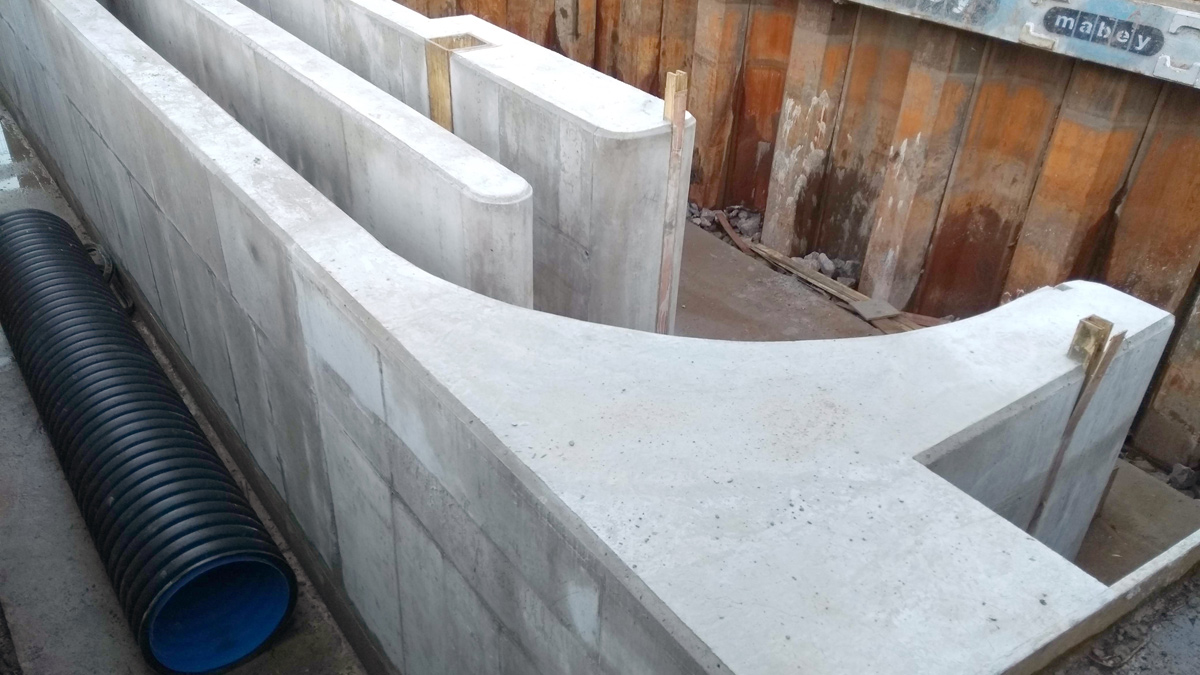
Upstream end mid-construction with Weholite® bypass pipe – Courtesy of Galliford Try
- The walls of the pass were poured in sequence to enable sufficient access for steel fixing and shuttering of the next wall. Mass fill concrete in between the walls formed the base of the fish and eel pass. The Larinier sections and eel tiles were then fixed in place.
- The bypass pipe was then installed with an upstream penstock and downstream headwall.
- To finish the banks of the river downstream a rip-rap finish was constructed and the areas landscaped.
Conclusion
Construction activities started in September 2018 and completed in March 2019, with over 6,000 working hours during which there were zero health & safety, environmental incidents or customer complaints.
The cofferdam was installed within the ecological window and allowed work to continue within without affecting the river. On completion, the fish pass has greatly reduce the short circuiting around the weir and will be monitored by the Environment Agency over the following 12 months to show improved fish passage on the River Blythe.
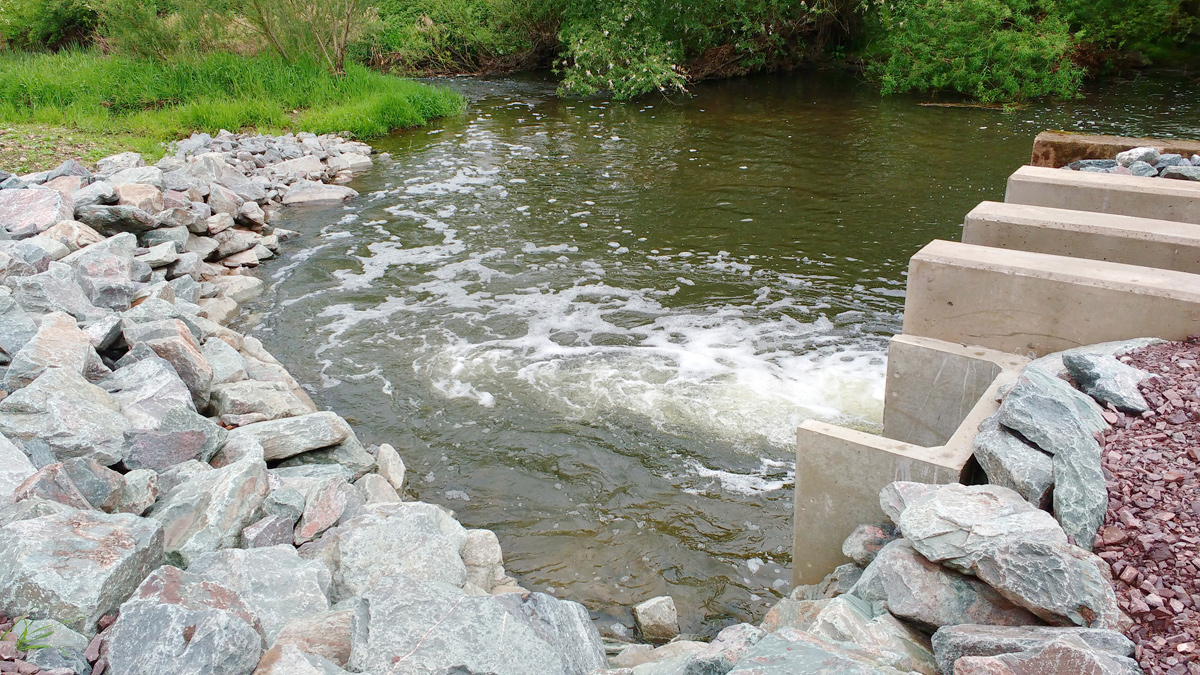
Downstream erosion protection – Courtesy of Galliford Try





